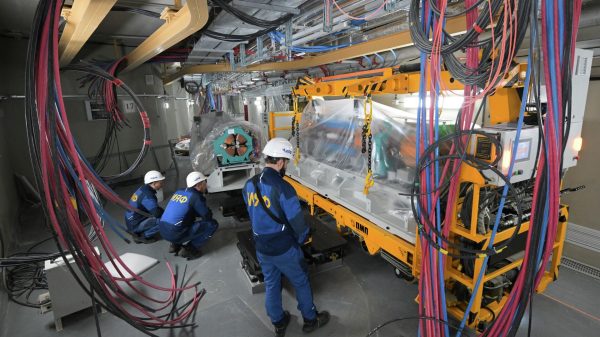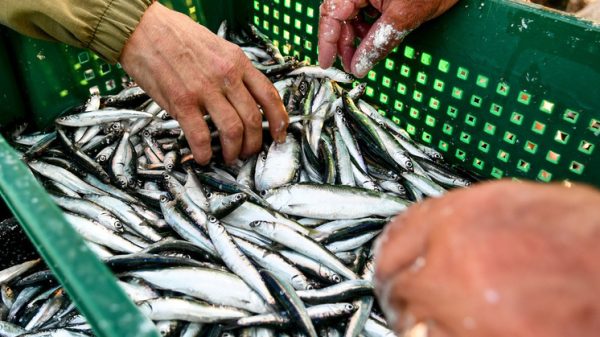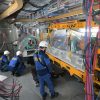Migrant labourers are being worked to death in searing temperatures in Qatar, with hundreds estimated to be dying from heat stress every year, a Guardian investigation can reveal.
This summer, hundreds of thousands of migrant workers toiled in temperatures of up to 45C for up to 10 hours a day as Qatar’s construction boom hit its peak ahead of the Fifa World Cup 2022.
The Qatari authorities, in line with other countries across the Gulf, have said they are protecting workers from heat-related injuries through a work ban that prohibits manual labour in unshaded outdoor areas between 11.30 and 3pm from mid-June to August.
Yet a Guardian analysis of official weather data over a nine-year period showed that the working ban does not keep workers safe. In the hours outside the ban, anyone working outdoors is still being exposed to potentially fatal levels of heat stress between June and September, which cardiologists say is leading to high numbers of fatalities every year.
Our analysis also found dangerous levels of heat exposure continues into the cooler months.
Doha is currently hosting the World Athletics Championships, with athletes and sports professionals describing extreme heat conditions over the weekend. Yet outside of the air-conditioned stadiums, workers remain at risk of serious harm from heat stress between 9am and 12 noon throughout October.
Working in high temperatures puts a huge strain on the human cardiovascular system, with extreme heat stress leading to fatal heart attacks and other cardiovascular fatalities, recent research has shown.
Every year hundreds of workers – many young men between 25 and 35 years old – die while working in Qatar. The majority of these deaths are attributed to cardiovascular causes or “natural death” by the Qatari authorities.
Heat stress graphic
Yet recent research published in the Cardiology Journal by a group of leading climatologists and cardiologists concluded that the deaths were likely to be caused by heatstroke, exploring the correlation between the deaths of 1,300 Nepali workers between 2009 and 2017, and rising temperatures.
The research found that in the cooler months about 22% of deaths year-on-year were attributed to heart attacks, cardiac arrest or other cardio-related causes by the Qatari authorities. In the summer months this spiked to 58%.
“From our research it was clear that workers are being recruited in their home countries partly on the basis of their health and are arriving in the Gulf fit for work,” said Dr Dan Atar, professor of cardiology and head of research at Oslo University Hospital, who co-authored the research into cardiovascular deaths and heat stress.
In one minute I’m soaked in sweat
Nepali construction worker
“Young men have a very low incidence of heart attacks yet hundreds of them are dying every year in Qatar attributed to cardiovascular causes. The clear conclusion that I draw from this as a cardiologist is that these deaths are caused by deadly heatstroke. Their bodies cannot take the heat stress they are being exposed to.”
Atar said that according to the research, as many as 200 of the 571 young men who died of cardiovascular causes between 2009 and 2017 could have been saved if effective heat protection measures had been implemented as part of occupational health and safety programmes.
Qatar’s construction boom ahead of the 2022 Fifa World Cup has seen the country’s migrant worker population rise to 1.9m, many of these young men from Nepal, India, Bangladesh and Pakistan who travel to the country to build the stadiums, roads and hotels that will service the tournament.
Of the 11 worker fatalities of workers linked to Fifa World Cup stadiums recorded by Qatar’s Supreme Committee, the body responsible for workers’ health and safety last year, nine were attributed to sudden heart attacks or respiratory failure.
“With the World Cup only two years away, the high number of deaths of young men from cardiac arrest in Qatar must be investigated urgently,” said Nick McGeehan, director of Fair/Square Projects, which has conducted research on heat stress and migrant worker rights. “For years human rights campaigners have been raising the impact of heat stress on worker fatalities and yet the deaths continue.”
In Doha, a sign outside one construction site warned workers to “Beat the heat” and “Quench your thirst – safety first”, but a Kenyan labourer dressed in sweat-stained pale blue overalls said there was no clean drinking water on the site. “When it’s hot it’s too tough. I’m not used to this climate … I never liked it since I came here. You feel so much stress,” he said.
Speaking to the Guardian this August, migrant workers said they suffered from a range of heat-related conditions, including skin allergies, headaches, altered vision, light-headedness and difficulty breathing. “In one minute I’m soaked in sweat,” said one Nepali construction worker.
The Guardian used weather data from 2008-2017 to calculate the wet-bulb globe temperature (WBGT) for Qatar, an internationally used metric that uses wind speed, solar radiation, humidity and air temperature to assess the impact of heat stress on the human body.
A WGBT reading of 28C and above is internationally accepted as the point at which the human body is dangerously affected by heat stress.
Our analysis found that:
-
In June, before the summer work ban comes into effect on the 15th of the month, it is only safe to work for a maximum of 15 minutes an hour between 9am and 3pm. Some days no work at all can be done without serious risk to workers’ health.
-
In July, despite the summer work ban, workers are still exposed to high levels of heat stress between 6am and 3pm, and some days well into the evening. Anyone working outside should have worked a maximum of 15 minutes an hour between 9 and 12.
-
In August it is unsafe to work outside in Qatar between 6am and 9pm. According to the WBGT analysis, between 9am and 12 noon outdoor work should be stopped entirely. From 3-6pm, work should only be resumed for 15 minutes an hour to avoid physical harm from the heat.
-
After the outdoor working ban ends on 31 August, it continues to be very dangerous to work outdoors throughout September. Heat stress is a serious risk between 6am and 3pm. Until 19 September, work should be stopped entirely between 9am and 3pm.
Amnesty says migrant workers still being exploited in Qatar
Read more
Qatar’s Supreme Committee, which is in charge of worker welfare on World Cup sites, said they had put in place a series of measures to mitigate the risk of heat exposure, including requiring contractors to run heat stress management plans and provide temperature and humidity readings during the summer period. This year it said it also provided thousands of workers with cooling towels and cooling vests.
The Qatari authorities and the Supreme Committee also said it had conducted research with the International Labour Organisation (ILO) and climate academics to assess the impact of workplace heat stress on workers, which looked at mitigation measures including on-site cooling rooms and improving rest break schedules.
As well as the 11.30am-3pm work ban, the Qatari authorities have instructed employers that labourers should not work more than five hours during the summer period.
However implementation appears patchy. In Doha this August, as temperatures reached 42C by 11am, migrant workers told the Guardian they were being forced to work in the searing heat for up to 10 hours a day.
Fatalities from heat stress can be avoided if workers are able to access immediate medical assistance, yet some workers interviewed in Qatar said their employer refused to issue them Qatari health cards or allow them access to medical facilities if they fell ill.
“We get a 30-minute break in eight hours,” said one man from Bangladesh working on a construction site near Doha. “If we take an extra 20-minute break, they tell us to do an extra 20 minutes’ work.”
A government spokesperson said, “We know that working conditions, particularly in summer, can be challenging and that heat stress needs particular attention … which is why we have introduced legislation to manage this in 2007 and, more recently, national heat stress guidance.”
The findings of the weather analysis highlight the significant challenges that rising temperatures across the world pose to industries like construction. Recent estimates from the ILO and UNDP shows potential losses of up to 10% of annual work hours by 2030 in the hottest countries.
“As global temperatures rise because of the climate crisis, the health risk posed by heat stress will have devastating health consequences for millions, yet is still not being seen as the emergency that it is,” says Professor Tord Kjellstrom, a consultant on environmental and occupational health for the United Nations and co-author of the Cardiology Journal report. “This has to change.”
Methodology
The Guardian collaborated with Erik Hansson, a doctoral candidate at the University of Gothenburg, Sweden, who calculated the wet-bulb globe temperature values at regular intervals for each day between May 2008 and October 2017. Our analysis used the median values for each day and interval.
Wet-bulb globe temperature attempts to capture the full effects of heat exposure on human health. The internal heat production – the physical activity – should also be considered. Our analysis assumes construction work to be at least “moderate” intensity, as it is classified in safety standards.
The thresholds for safe working practices were calculated using the American Conference of Governmental Industrial Hygienists (ACGIH) guidelines. WBGT readings above 28C were considered to be dangerous for moderate work. Temperatures above this point were assumed to require breaks for 25-75% of working time. At WBGT values above 31.5, any work, regardless of breaks, was considered unsafe.



















































Свежие комментарии